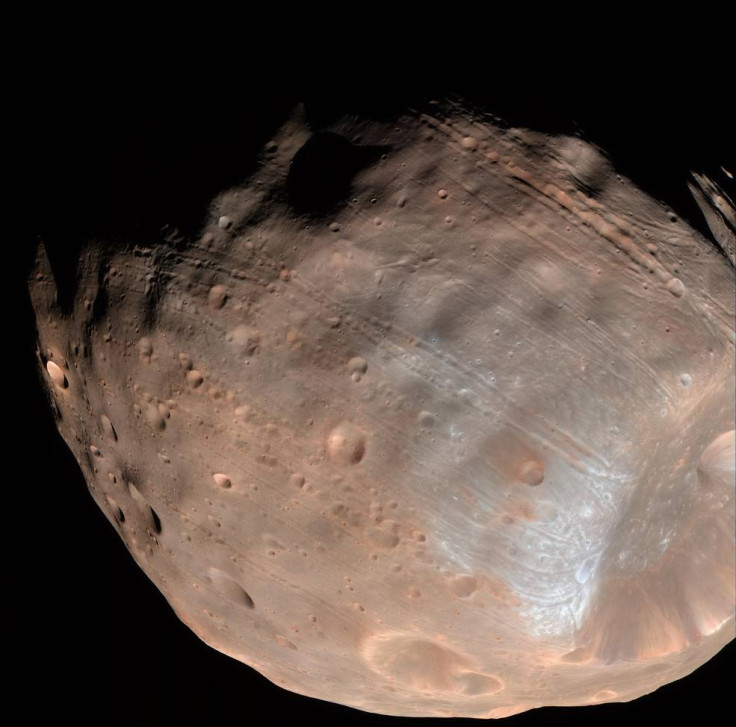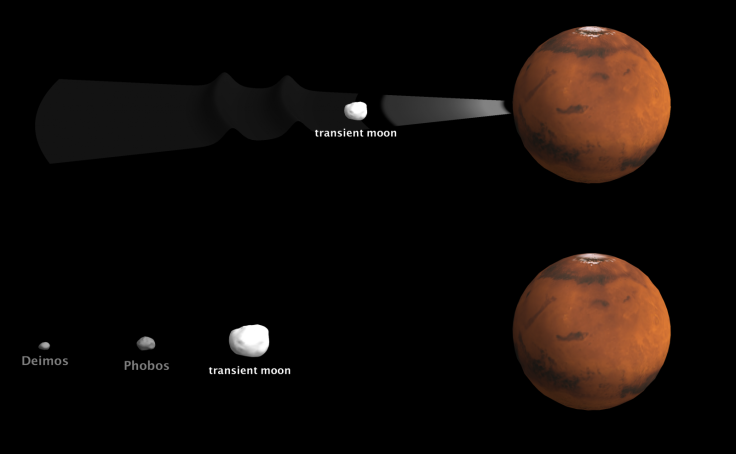Mars's potato-shaped moons Phobos and Deimos were formed by massive impact
Giant impact on Red Planet could have produced many moons, but only Phobos and Deimos survived.

Mars' two moons Phobos and Deimos were formed by a massive impact between the Red Planet and a proto planet about three times smaller, a study has indicated. Researchers say this impact likely produced many more moons, but the two we see today are the only survivors.
The origin of the two potato-shaped moons has long been debated. The most popular theory is that they were captured asteroids, pulled into Mars' orbit long ago. This would explain their small size, weird shape and cratered surface – however it does not explain their very precise orbits.
Another scenario says a giant impact with Mars created a disc of debris around the Red Planet which eventually clumped together to make the moons (in the same way it is thought Earth's moon formed). However, this theory does not readily explain why Mars ended up with two small moons, instead of one big one like Earth.

In a study published in Nature Geoscience, an international team of researchers ran a simulation of a giant impact event on Mars to see if it could result in the formation of Phobos and Deimos. Their findings showed the two moons could have formed from the debris in the outer portion of the disc a collision would have produced.
Furthermore, they found larger moons would have formed from the denser material of the inner disc. Numerical simulations showed that these larger, inner moons would have been pulled back to Mars and destroyed around five million years after forming as a result of the tidal pull of the planet (known as the Roche limit). The two outer moons would have eventually settled into the orbits of Phobos and Deimos, they added.
Researchers predict both moons would be composed of a mixture of material from Mars and the impactor. They said a mission to Mars' moons to collect samples would be required to show this.

The study also fits with the eventual destruction of Phobos. While Deimos' orbit is stable, the closer of the two moons is slowly being drawn towards Mars and pulled apart. Scientists have previously estimated it will be destroyed in around 30m years, leaving a ring around Mars that will last 100m years.
Writing an accompanying News & Views article, Erik Asphaug, from the University of Arizona, said: "The ideas all fit together, but definitive proof of giant impact formation might await the completion of Japan's upcoming sample return mission to Phobos and Deimos.
"There could have once been many moons around Mars, the most massive sculpting the system and the smallest being the last to come down. Phobos could be the straggler in a series of crashing moonlets, readying its final approach."
© Copyright IBTimes 2024. All rights reserved.







